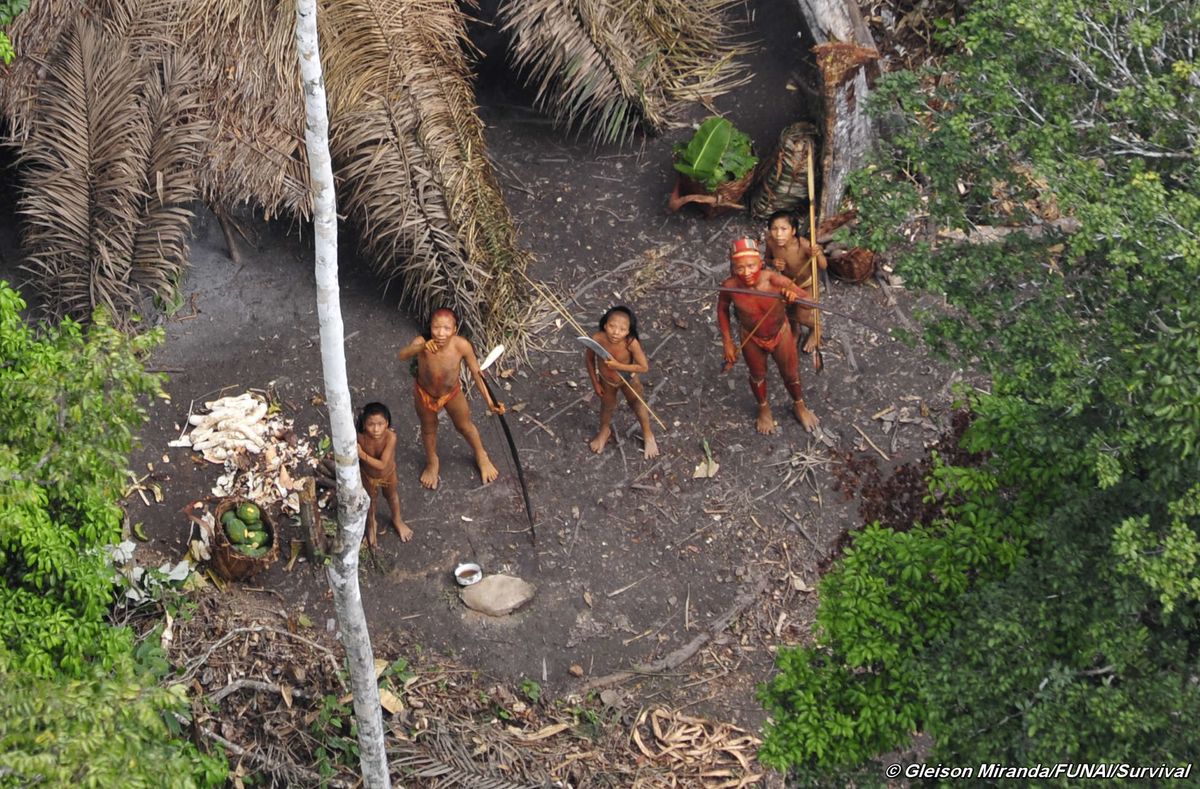Imperiled Amazon Indians Make 1st Contact with Outsiders

Indigenous people with no prior contact to the outside world have just emerged from the Amazon rainforest in Brazil and made contact with a group of settled Indians, after being spotted migrating to evade illegal loggers, advocates say.
The news, which was released yesterday (July 2), comes after sightings of the uncontacted Indians in Brazil near the border with Peru, according to the group Survival International. Officials with the organization had warned last month that the isolated tribes face threats of disease and violence as they moved into new territory and possibly encountered other people.
"Something serious must have happened," José Carlos Meirelles, a former official with the Brazilian Indian Affairs Department FUNAI, said in a statement. "It is not normal for such a large group of uncontacted Indians to approach in this way. This is a completely new and worrying situation, and we currently do not know what has caused it." [See Photos of Uncontacted Amazon Tribe]
Survival International officials said dozens of uncontacted Indians were recently spotted close to the home of the Ashaninka Indians in Brazil's Acre state along the Envira River, while a government investigation in the region uncovered more ephemeral traces of the tribe on the move: footprints, temporary camps and food leftovers. On Sunday (June 29), reports suggest, the vulnerable group of Indians made contact with the Asháninka.
Advocates think the Indians crossed into Brazil from Peru to escape drug traffickers and illegal loggers who started working in their territory, Fiona Watson, research and field director for Survival International, told Live Science in an email.
Advocates warned this could be a deadly development.
As they travel, the tribe may be at risk of clashes with other groups and contagious diseases to which they have no immunity. Illnesses like the flu and malaria, for example, devastated the Zo'e tribe in northern Brazil after Christian missionaries established a base camp in the area in the 1980s.
Sign up for the Live Science daily newsletter now
Get the world’s most fascinating discoveries delivered straight to your inbox.
"I am from the same area as they are," Nixiwaka Yawanawá, an Indian from Brazil's Acre state, said in a statement. "It is very worrying that my relatives are at risk of disappearing. It shows the injustice that we face today. They are even more vulnerable because they can’t communicate with the authorities. Both governments must act now to protect and to stop a disaster against my people," added Yawanawá, who joined Survival to speak out for the rights of such indigenous peoples.
Another uncontacted tribe was famously photographed near the Brazil-Peru border in 2008. Images released by Survival International at the time showed men pointing arrows at the plane photographing them. In 2011, a government post that was monitoring the area was overrun by illegal loggers and drug smugglers.
"International borders don't exist for uncontacted tribes, which is why Peru and Brazil must work together to prevent lives being lost," Survival director Stephen Corry urged in the statement. "Both governments must act now if their uncontacted citizens are to survive."
Follow Megan Gannon on Twitter and Google+. Follow us @livescience, Facebook & Google+. Original article on Live Science.












